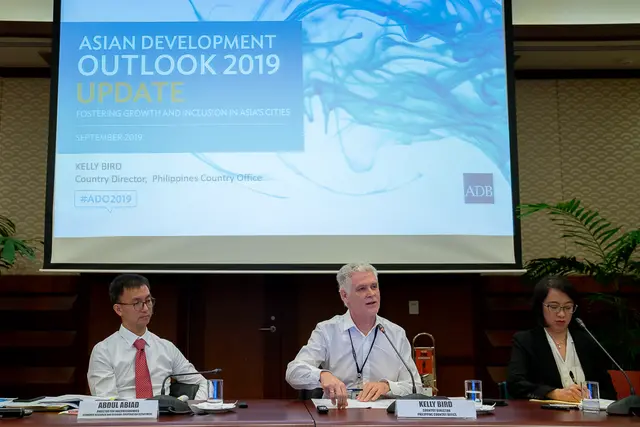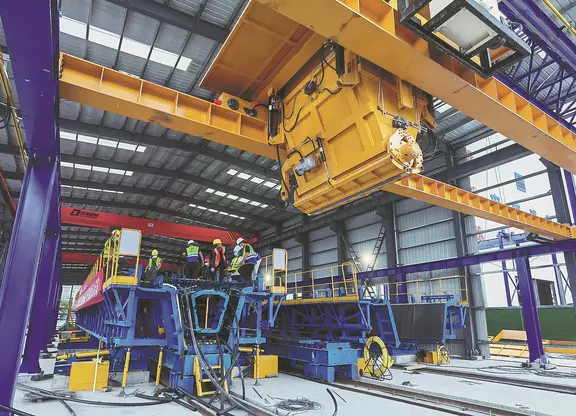By APD writer Melo M. Acuña
The Asian Development Bank said the gross domestic product in developing Asia is protected at 5.4% in 2019 as a whole and at 6.0% excluding the high-income newly industrialized economies.
In its Asian Development Outlook for 2019 launched yesterday, the ADB said regional growth has remained robust but expected to moderate. The GDP expansion in the region, considered still strong but expected to slow down from 5.9% in 2018 to 5.4 this year and return to 5.5% next year.
“Revisions to April forecasts in Asian Development Outlook 2019 (ADO 2019) are the 0.3 percentage points lower for this year and 0.1 points lower for 2020. The revisions are based on gloomier prospects for international trade partly due to the re-escalation in the trade conflict between the United States and the People’s Republic of China and evidence of slowing growth in the advanced economies and the PRC as well as in India and the larger economies in East and Southeast Asia.
“Excluding newly industrialized economies, growth in developing Asia is projected to slow from 6.5% in 2018 to 6.0% this year and next,” the report disclosed. The slowing trend for growth prevailed in the first semester of 2019 as exports and investment faltered in many economies across the region thus leaving private consumption as the main support for continued growth.
Uncertainty worsened and drove down aggregate growth in the advanced economies now forecast to moderate from 2.2% in 2018 to 1.7% in 2019 and 1.4% in 2020. The area and the US will grow somewhat slower than previously projected. While Japan grew during the first half of the year, it was not enough to prop up demand for regional exports.
The regional bank believes declining investment growth in developing Asia could impact on future growth prospects. The contribution of investment to GDP growth declined during the first three months of 2019 which is expected to continue to decline for the rest of the year. Though foreign direct investment (FDI) inflows by non-residents continue, developing Asia is investing more abroad which led to net FDI outflows for the region. Slower domestic investment, if sustained, would mean less new productive capacity going forward which has implications for regional growth prospects.
With the trade slowdown, affected by a sharp downswing in the electronics cycle, growth prospects for the People’s Republic of China and the more open economies in East and Southeast Asia are downgraded. Meanwhile, growth in South Asia seen moderating this year as India’s economy slows due to domestic reasons such as the pre-election decline in investment and tighter credit conditions.
In Central Asia and the Pacific, by contrast, growth prospects improve as public spending continues to stimulate the economy in Kazakhstan and Uzbekistan and as Papua New Guinea recovers from an earthquake in February 2018.
The Asian Development Bank said regional inflation is picking up slightly but remains benign as headline inflation will edge up from 2.4% in 2018 to 2.7% in 2019 and 2020 as both forecasts upward adjustments by 0.2% percentage points from the ADO 2019. The revisions were made due to a buildup of inflationary pressure due to the rise of food prices in the region, mainly in the PRC.
It was also noted that the regional current account surplus rose as slower imports are offsetting weakness in exports in many developing Asian economies. The merchandise trade surplus in the PRC increase in the first have of the year as imports fell more substantially that exports, raising the country’s current account surplus. As a consequence, developing Asia’s combined current account surplus is now forecast to increase to 1.1% of regional GDP in 2019 or 0.7 percentage points higher than the projected in ADP 2019 prior to resuming its narrowing trend to 0.7% in 2020.
In its Asian Development Outlook 2019, ADB said the escalating and broadening trade conflict may damage supply chains. It took note of the negotiations which broke down midyear of 2019, prompted a new round of tariff escalations, threats, as well as non-tariff constraints on technology transfer and investment. Bilateral trade data from the first semester of 2019 showed a decline in trade between the PRC and the US and traces of trade redirection from the PRC toward other economies in developing Asia. Foreign investment patters are shifting in tandem with trade redirection.
According to the ADB, further escalation in the US-PRC trade conflict could have repercussions beyond trade.
“The conflict will likely persist at least into 2020 and could broaden to involve other regional economies,” the statement said as there is the risk of deeper malaise in the advanced economies has worsened with the uncertainty how policy makers in developing Asia and beyond will respond to weaker global growth.
Identified as another downside risk to the forecast comes from proliferating private debt in several economies in developing Asia which may impact on financial stability in the current environment of high risks from large external shocks.
(ASIA PACIFIC DAILY)
 简体中文
简体中文







